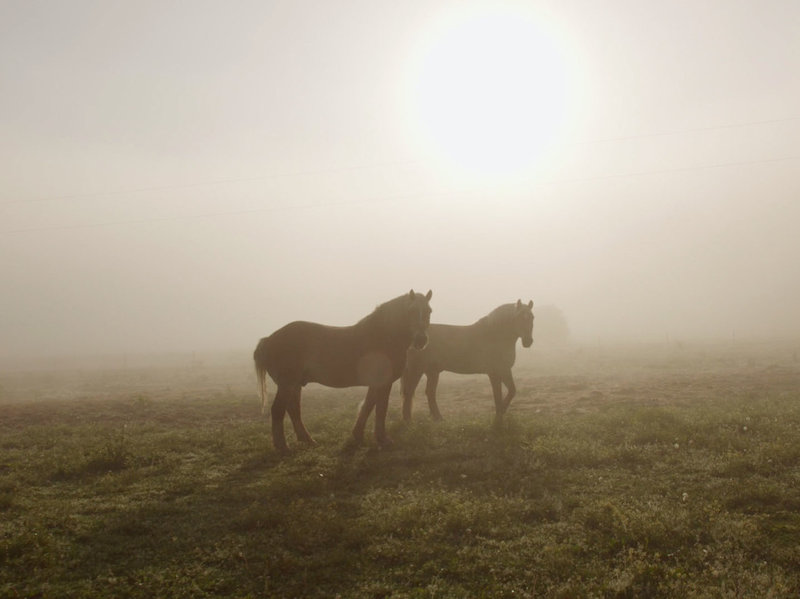Actually, she doesn't have to be your wife, or anyone's wife really, but she does need to be older than 18. And you do need to carry her - through an obstacle course - and you need to win.
Wife carrying is a contest in which male competitors race while each carrying a female teammate. The objective is for the male to carry the female through a special obstacle track in the fastest time. The sport was first introduced at Sonkajärvi, Finland.
Several types of carry may be practised: piggyback, fireman's carry (over the shoulder), or Estonian-style (the wife hangs upside-down with her legs around the husband's shoulders, holding onto his waist).
Wife Carrying World Championships are held annually in Sonkajärvi since 1992.
The prize is one's wife's weight in beer (via).
Rules:
The original course was a rough, rocky terrain with fences and brooks, but it has been altered to suit modern conditions. There is now sand instead of full rocks, fences, and some kind of area filled with water (a pool). These are the following rules set by the International Wife Carrying Competition Rules Committee:
- The length of the official track is 253.5 meters.
- The track has two dry obstacles and a water obstacle about one meter deep.
- The wife to be carried may be your own, or the neighbor's, or you may have found her further afield; she must, however, be over 17 years of age.
- The minimum weight of the wife to be carried is 49 kilograms. If she weighs less than 49 kg, she will be burdened with a rucksack containing additional weight to bring the total load to be carried up to 49 kg.
- All participants must enjoy themselves.
- The only equipment allowed is a belt worn by the carrier and a helmet worn by the carried.
- The contestants run the race two at a time, so each heat is a contest in itself.
- Each contestant takes care of his/her safety and, if deemed necessary, insurance.
- The contestants have to pay attention to the instructions given by the organizers of the competition.
- There is only one category in the World Championships, and the winner is the couple who completes the course in the shortest time.
- Also, the most entertaining couple, the best costume, and the strongest carrier will be awarded a special prize.
World Champions (and the Finns have it!!! Mostly.):
- 2017 – Taisto Miettinen (Finland) and Kristiina Haapanen (Finland), 68 seconds.
- 2016 – Dimitriy Sagal (Russia) and Anastasia Loginova (Russia).
- 2015 – Ville Parviainen (Finland) and Sari Viljanen (Finland).
- 2014 – Ville Parviainen (Finland) and Janette Oksman (Finland).
- 2013 – Taisto Miettinen (Finland) and Kristiina Haapanen (Finland).[5]
- 2012 – Taisto Miettinen (Finland) and Kristiina Haapanen (Finland).
- 2011 – Taisto Miettinen (Finland) and Kristiina Haapanen (Finland).[6]
- 2010 – Taisto Miettinen (Finland) and Kristiina Haapanen (Finland).[7]
- 2009 – Taisto Miettinen (Finland) and Kristiina Haapanen (Finland).[7]
- 2008 – Alar Voogla (Estonia) and Kirsti Viltrop (Estonia).[8]
- 2007 – Madis Uusorg (Estonia) and Inga Klauso (Estonia), 61.7 seconds.[9]
- 2006 – Margo Uusorg (Estonia) and Sandra Kullas (Estonia), 56.9 seconds.[10]
- 2005 – Margo Uusorg (Estonia) and Egle Soll (Estonia), 59 seconds.[11]
- 2004 – Madis Uusorg (Estonia) and Inga Klauso (Estonia), 65.3 seconds.[12]
- 2003 – Margo Uusorg (Estonia) and Egle Soll (Estonia), 60.7 seconds.[13]
- 2002 – Meelis Tammre (Estonia) and Anne Zillberberg (Estonia), 63.8 seconds.
- 2001 – Margo Uusorg (Estonia) and Birgit Ullrich (Estonia), 55.6 seconds.[14]
- 2000 – Margo Uusorg (Estonia) and Birgit Ullrich (Estonia),[15] 55.5 seconds (world record).
- 1999 – Imre Ambos (Estonia) and Annela Ojaste (Estonia), 64.5 seconds.
- 1998 – Imre Ambos (Estonia) and Annela Ojaste (Estonia), 69.2 seconds.[16]
- 1997 – Mikkel Christensen (Finland) and Tiina Jussila (Finland), 65 seconds.[17]
Where to Participate:
-Australia-
Australian Wife Carrying Championships are held annually since 2005.
- 2016 - Australian Champions: Adrian and Amanda Betts
- 2013 - South Bank, Brisbane[18]
- 2008 - in Singleton, NSW[19]
- 2007 - Australian Champions: Anthony Partridge and Angela Moore[19]
-North American-
The North American Wife Carrying Championships take place every year on Columbus Day Weekend in October at Sunday River Ski Resort in Newry, Maine.
-United States-
The US final takes place the second weekend of July in Menahga Minnesota (MN-St. Urho Wife Carry for Charity Challenge). Major wife-carrying competitions are also held in Monona, Wisconsin, Minocqua, Wisconsin and Marquette, Michigan.
-Asia-
Ecorun India, a society for creating environmental awareness organized Wife Carrying Race in Thiruvananthapuram, Kerala, India, Asia on January 1, 2011. The event is called "BHAARYAASAMETHAM" roughly translated as 'with your wife' in Malayalam, the local language. The society plans on conducting more such events every year in India. Wife carrying in Asia is also called matukinina.
A Bollywood movie named Dum Laga Ke Haisha had "wife carrying race" in its backdrop (via).
For more on . . .
-N- Stuff : Air Guitar World Championships
BE SURE TO SCROLL DOWN AND SUBSCRIBE - THANKS FOR READING!




































